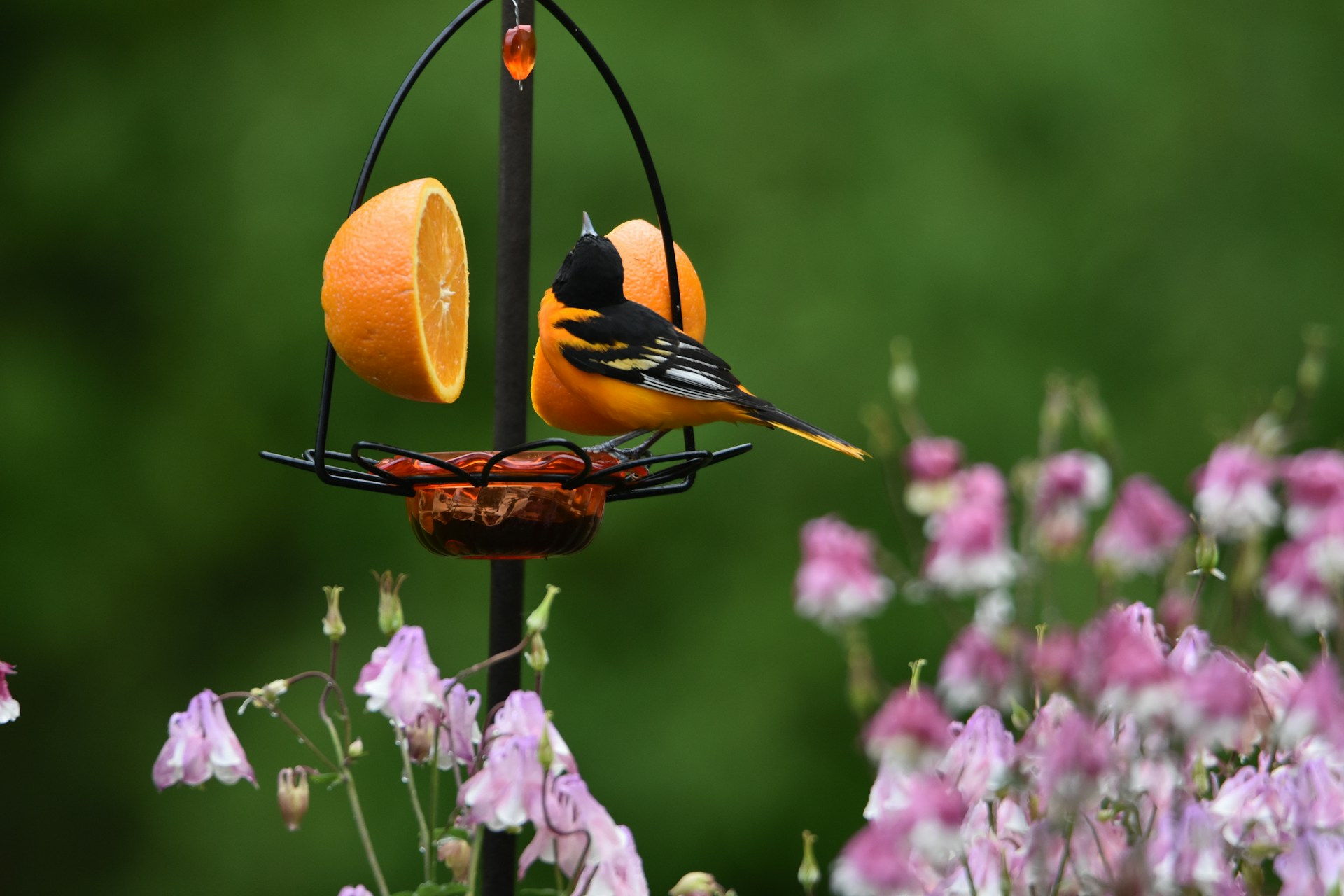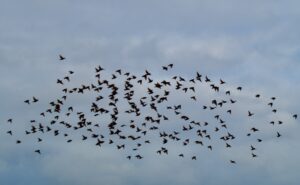
What Are the Best Bird Feeders for Small Gardens?
Bird feeders suitable for small gardens
Bird feeders are a great addition to any garden, even if it is small in size. When choosing a bird feeder for a small garden, it is important to consider the space available. Opt for feeders that are compact and don’t take up too much room. Hanging feeders are ideal for small gardens, as they can be suspended from trees or hooks, saving valuable ground space. Additionally, consider feeders that are designed to be placed on windowsills or mounted on walls, as these can be an excellent space-saving option.
Another factor to consider when selecting a bird feeder for a small garden is the design and material. Look for feeders that are made of durable, weather-resistant materials such as metal or plastic. These will withstand the elements and last longer. Additionally, feeders with a simple and easy-to-fill design will be more convenient for you to maintain. Opt for feeders that have removable parts or feeding trays that can be easily cleaned, making it easier to keep the feeder hygienic for the visiting birds. By choosing a bird feeder that is suitable for a small garden, you can create a welcoming space for birds to visit and enjoy.
Different types of bird feeders
Bird feeders come in a variety of types, each designed to cater to the specific feeding needs of different bird species. One popular type is the tray feeder, which features a flat surface where bird food can be placed. Tray feeders are versatile and can attract a wide range of birds, including ground-feeding species. They are also easy to clean and refill, making them a convenient choice for bird enthusiasts.
Another type of bird feeder is the tube feeder. These feeders consist of a long, cylindrical tube with small feeding ports where birds can access the food. Tube feeders are particularly suited for attracting smaller birds such as finches and chickadees. They are designed to hold small seeds like nyjer or sunflower chips, and their narrow ports help prevent larger birds from accessing the food. Tube feeders can be hung from trees or mounted on poles, providing a versatile option for bird feeding enthusiasts.
Factors to consider when choosing a bird feeder
When choosing a bird feeder for your small garden, there are several factors you should take into consideration. First and foremost, you need to think about the type of birds you want to attract. Different species have different feeding habits, so it’s important to choose a feeder that accommodates their needs. For example, if you want to attract hummingbirds, a nectar feeder with small feeding ports would be ideal, while a platform feeder with a large surface area can attract a variety of ground-feeding birds.
Another factor to consider is the size and capacity of the bird feeder. You want to ensure that the feeder is large enough to hold an adequate amount of bird food, but not so large that it overwhelms your small garden. Additionally, the size of the feeding ports or openings should be suitable for the birds you want to attract. Smaller birds, such as finches, prefer feeders with small openings, while larger birds, such as cardinals, need larger openings to access the food. By choosing the right size and capacity, you can create a comfortable and inviting feeding space for your desired bird species.
The importance of size and capacity
Bird feeders come in various shapes and sizes, and one important factor to consider when choosing a bird feeder is its size and capacity. The size of the feeder determines how much birdseed it can hold, while the capacity indicates how many birds it can accommodate at one time.
A larger feeder with a higher capacity is ideal if you have a larger garden or want to attract more birds. This allows multiple birds to feed simultaneously, reducing competition and ensuring that each bird gets its fair share of food. On the other hand, smaller feeders may be more suitable for smaller gardens or if you only want to attract a few specific bird species. The size and capacity of the feeder should be chosen based on the number and variety of birds you wish to attract, ensuring that there is enough food for everyone without overwhelming the space.
How to attract specific bird species
Different bird species have varying preferences when it comes to their feeding habits and the type of food they prefer. If you want to attract specific bird species to your garden, it is essential to provide the right kind of food and create an inviting environment for them.
Firstly, research the specific bird species you are interested in attracting and find out what type of food they typically consume. For example, hummingbirds are attracted to nectar, while finches enjoy seeds. Once you have identified the preferred food, invest in a bird feeder specifically designed for that type of bird’s feeding habits. This will ensure that you are offering the appropriate food in a manner that is most appealing and accessible to them.
Secondly, consider the habitat and surroundings that the desired bird species thrive in. Some birds are attracted to open spaces, while others prefer more sheltered areas with plenty of trees and shrubs. By creating a suitable environment, such as planting native plants or providing birdhouses, you can entice specific bird species to visit and potentially make your garden their home.
Remember that attracting specific bird species requires patience and consistency. It may take some time for the birds to discover your offerings and feel comfortable visiting your garden. By providing the right food and creating an inviting environment, you increase the chances of attracting the bird species you desire and enjoying their presence in your small garden.
Choosing a bird feeder based on bird feeding habits
Bird feeding habits vary among different bird species, and choosing the right bird feeder can greatly enhance your chances of attracting them to your garden. First, consider whether you want to attract ground-feeding birds or perching birds. Ground-feeding birds, such as Sparrows and Towhees, prefer tray feeders or platform feeders that are close to the ground. On the other hand, perching birds, like Finches and Chickadees, are attracted to tube feeders with perches where they can comfortably eat and rest.
Another important factor to consider is the type of food the birds prefer. Some bird species are seed eaters, while others rely on nectar or suet. If you want to attract seed-eating birds, choose a feeder with small openings to prevent larger birds from accessing the seeds. If you’re interested in attracting hummingbirds, opt for a nectar feeder with red accents or flowers to catch their attention. Similarly, if you want to invite woodpeckers, choose a suet feeder where they can enjoy their favorite food. By understanding the specific feeding habits of different bird species, you can select the most suitable bird feeder for your garden.
Placement and positioning of bird feeders
One important consideration when it comes to bird feeders is their placement and positioning. The right location can greatly impact the success of attracting birds to your garden. It is best to place the bird feeder in an area that is easily visible from the window or any other viewing spot, allowing you to enjoy the birds’ presence. Additionally, positioning the feeder near some trees or shrubs can provide a sense of safety and cover for the birds, encouraging them to visit more frequently.
Another factor to keep in mind is keeping the feeder away from potential predators. Placing it at least 10 feet away from any large trees or bushes can help discourage squirrels or other animals from reaching the feeder easily. Similarly, it is important to avoid placing the feeder near any structures or fences that may give predators a clear advantage. By strategically positioning your bird feeder, you can create a safe and inviting space for birds to enjoy their meals and provide entertainment for yourself.
Weather-resistant bird feeders for small gardens
When it comes to choosing bird feeders for small gardens, one important factor to consider is their weather resistance. Small gardens often have limited space, which means that bird feeders are more likely to be exposed to the elements. Rain, wind, and snow can wreak havoc on bird feeders that are not designed to withstand harsh weather conditions. Therefore, it is crucial to opt for feeders that are weather resistant and can withstand the changing seasons.
Weather-resistant bird feeders are typically made of durable materials such as metal, plastic, or wood that have been treated to withstand moisture and temperature fluctuations. These feeders are designed with features like sealed edges, waterproof coatings, and drainage holes to prevent water from pooling inside and causing damage or mold growth. Additionally, some weather-resistant feeders have special mechanisms that protect the food from getting wet, ensuring that the birds always have access to dry and fresh food. By investing in a weather-resistant bird feeder, you can ensure that it not only survives the elements but also provides a reliable food source for the birds in your small garden.
Easy-to-clean bird feeders for small gardens
When it comes to choosing bird feeders for small gardens, it is essential to prioritize ease of cleaning. Easy-to-clean bird feeders help maintain a healthy environment for the birds and prevent the spread of diseases. Look for feeders that have removable parts or trays, making it simple to access and clean every nook and cranny. Additionally, opt for feeders made from materials that can be easily wiped down or washed without damaging the structure or compromising the bird’s safety. Regular cleaning of the bird feeder will not only ensure the birds have a clean feeding area but also provide you with the opportunity to observe their behavior up close.
One popular option for an easy-to-clean bird feeder is a tube feeder with removable perches and trays. These feeders are designed with accessibility in mind, allowing you to easily disassemble and wash all the individual parts. Look for models that have wide openings for easy pouring and cleaning, and consider feeders with detachable trays that catch fallen seeds, as these can be quickly emptied and cleaned. By investing in an easy-to-clean bird feeder, you are not only providing the birds with a healthy feeding environment but also making maintenance a breeze for yourself.
Budget-friendly bird feeders for small gardens
When it comes to creating a bird-friendly environment in small gardens, budget-friendly bird feeders can be a great option. These feeders are not only affordable but also provide a convenient way to attract a variety of bird species without breaking the bank. Whether you are a bird enthusiast with limited space or a beginner looking for an inexpensive way to enjoy the beauty of birds in your garden, there are several options available that won’t strain your budget.
One popular budget-friendly bird feeder option for small gardens is the platform feeder. These simple and versatile feeders provide a flat surface for birds to perch and feed on, making them suitable for a wide range of bird species. Additionally, platform feeders are often easier to clean and maintain compared to other types of feeders. Their simplicity and affordability make them an excellent choice for anyone looking to attract birds on a budget.


